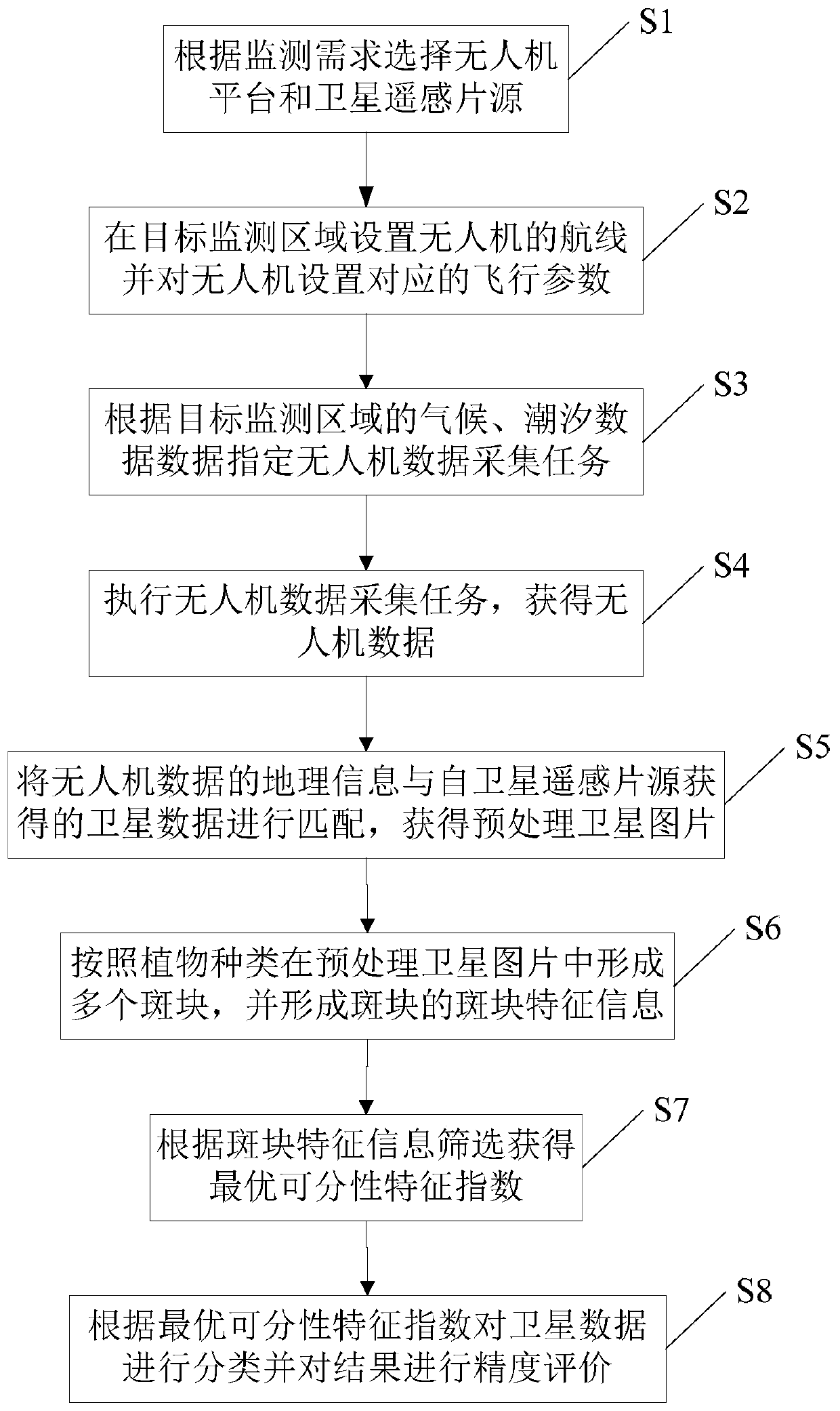Monitoring method of alien species in estuary wetland
A technology for wetlands and monitoring areas, applied in the field of ecological environment assessment, can solve problems such as geometric distortion and irregular radiation, complex processing, and low spectral resolution of UAV images, so as to reduce time and workload, optimize accuracy, and cover wide range of effects
- Summary
- Abstract
- Description
- Claims
- Application Information
AI Technical Summary
Problems solved by technology
Method used
Image
Examples
Embodiment Construction
[0040] According to the attached figure 1 , give a preferred embodiment of the present invention, and give a detailed description, so that the functions and characteristics of the present invention can be better understood.
[0041] see figure 1 , a method for monitoring alien species in estuary wetlands according to an embodiment of the present invention, comprising the steps of:
[0042] S1: Select a UAV platform and a satellite remote sensing film source according to monitoring requirements.
[0043]In this embodiment, the Phantom 3 unmanned aerial vehicle of DJI Corporation (DJI Corporation) is selected. This is a small, battery-powered, relatively cheap unmanned aerial vehicle equipped with a high-definition camera. It can automatically set route planning, Shooting angle, altitude, shooting interval and flight speed; the acquired photos are integrated with built-in GPS geographic information, which can be matched with satellite data without difference.
[0044] Satelli...
PUM
 Login to View More
Login to View More Abstract
Description
Claims
Application Information
 Login to View More
Login to View More - R&D
- Intellectual Property
- Life Sciences
- Materials
- Tech Scout
- Unparalleled Data Quality
- Higher Quality Content
- 60% Fewer Hallucinations
Browse by: Latest US Patents, China's latest patents, Technical Efficacy Thesaurus, Application Domain, Technology Topic, Popular Technical Reports.
© 2025 PatSnap. All rights reserved.Legal|Privacy policy|Modern Slavery Act Transparency Statement|Sitemap|About US| Contact US: help@patsnap.com

